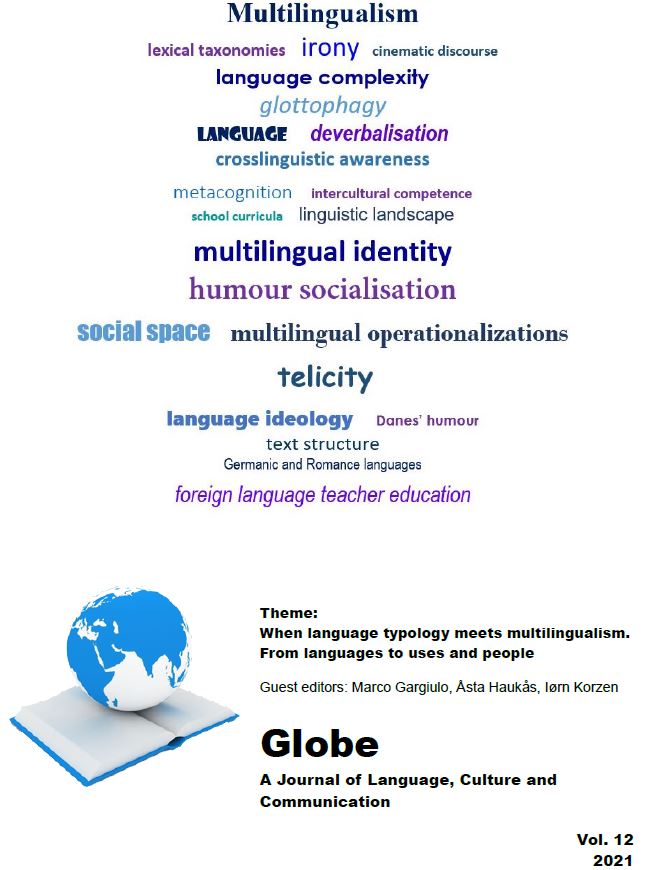Are some languages more complex than others? On text complexity and how to measure it
DOI:
https://doi.org/10.5278/ojs.globe.v12i.6665Abstract
In this paper, I discuss the concept of linguistic complexity, which has been high on the linguistic agenda during the last few decades (Merlini Barbaresi (ed.) 2003, Sampson et al. (eds.) 2009, Moretti 2018 and many others). I first cite the most important definitions of complexity proposed by different scholars, I then apply and compare particular elements of these definitions to linguistic phenomena found in two specific languages, Italian and Danish. I focus mainly on the number of propositions per sentence and on the degree of their subordination (as conveyed by verb implicitness and nominalisation), two manifestations of complexity that are numerically measurable and cross-linguistically comparable. I give both cross- and intralinguistic examples taken from comparable texts that exhibit differences in these kinds of complexity, and in this way I demonstrate that linguistic complexity is clearly linked to and dependent on the language type in question as well as the given uses and people. In the case of Italian, we might talk about a "language-internal multilingualism". However, I conclude the paper by giving a positive answer to my question: Some languages are indeed more complex than others.
Downloads
Published
Issue
Section
License
Articles published in Globe: A Journal of Language, Culture and Communication are following the license Creative Commons Attribution-NonCommercial-NoDerivs 3.0 Unported (CC BY-NC-ND 3.0). Authors retain copyright and grant the journal right of first publication with the work simultaneously licensed under a Creative Commons Attribution License: Attribution - NonCommercial - NoDerivs (by-nc-nd). Further information about Creative Commons


